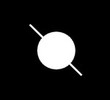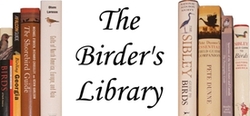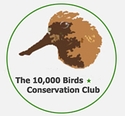Did you know that you can use a spotting scope to view things besides birds and other wildlife? Ok, maybe that’s obvious to most people, though apparently it wasn’t to me. I had never used my scope for anything else until yesterday.
By the way, this makes me realize how thankful I am that the prime shorebird season doesn’t correspond with the prime season for people on the beach. I can just imagine:
Random Beachgoer: (with a sly grin) Whatcha lookin’ at?
Me: (not noticing the grin) That flock of shorebirds over there.
Random Beachgoer: Suuuuuuure
That would get tiresome very quickly.
Anyways, the bodies that I was thinking of viewing through the scope are heavenly ones. As in astronomical, in case you first thought of something else. My wife and I had talked for a while about using the scope to find some planets, but hadn’t ever gotten around to it. But last night she noted that Venus, Mars, and Saturn should all be visible, so we finally gave it a try.
We first spotted a light that we thought could be Saturn. We really didn’t know what to expect; I was hoping to be able to see the rings, but we were doubtful. It took a while to get the correct object in the scope (so much harder than during the day – the little sight-guide-thing attached to the eyepiece was useless). At 20x zoom, it was just another star-like object. But after zooming in to 60x – we have rings! Well, I should clarify that. It still looked nothing like the Saturn you see in books, all swirly yellow with a thick, multi-layered ring surrounding it. Basically, it was a white dot with a white line through it. But it was still exceedingly cool.

A crude mock-up of what Saturn looked like through the scope
We tried to find Mars next, but it turned out to be much tougher. There were two likely candidates, but neither one looked very unique in the scope. I was hoping it would be distinctly reddish, but no such luck.
And Venus was too close to the horizon, and thus blocked by trees.
To cap it off, I turned the scope toward the Moon and almost blinded myself! After letting my eye adjust, the view was amazing. You could make out some incredible detail, especially at full zoom: mountain ranges, colossal craters, NASA probes. Well, maybe not the latter.
You may be wondering how, out of all the possibilities twinkling in the sky, were we able to pick out the most likely planetary candidates. Simple – it turns out there’s an app for that. Planets is an app for the iPhone family of devices that makes it incredibly easy. It will show you what planets are visible and where they are. It’s a great little app, easy to use, and it’s free!
Clearly, spotting scopes won’t work as well for this as telescopes designed for astronomy. But if you have a scope*, you should give it a try sometime.
*Unfortunately, it does need to be a scope. Binoculars don’t work well for viewing planets since the magnification is too low and it’s impossible to hold them steady enough.
Tags:
astronomy
 Posted in
Posted in 




